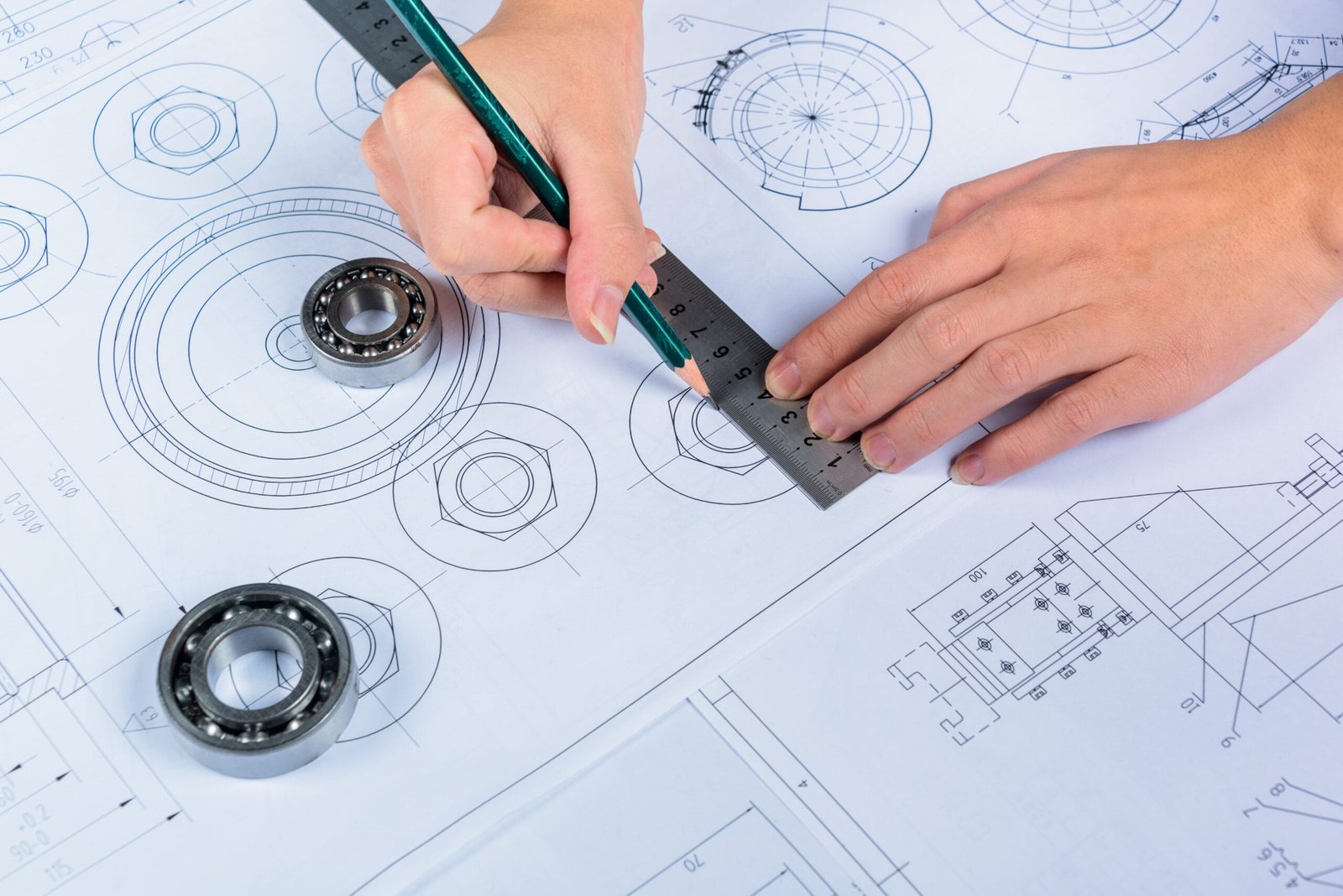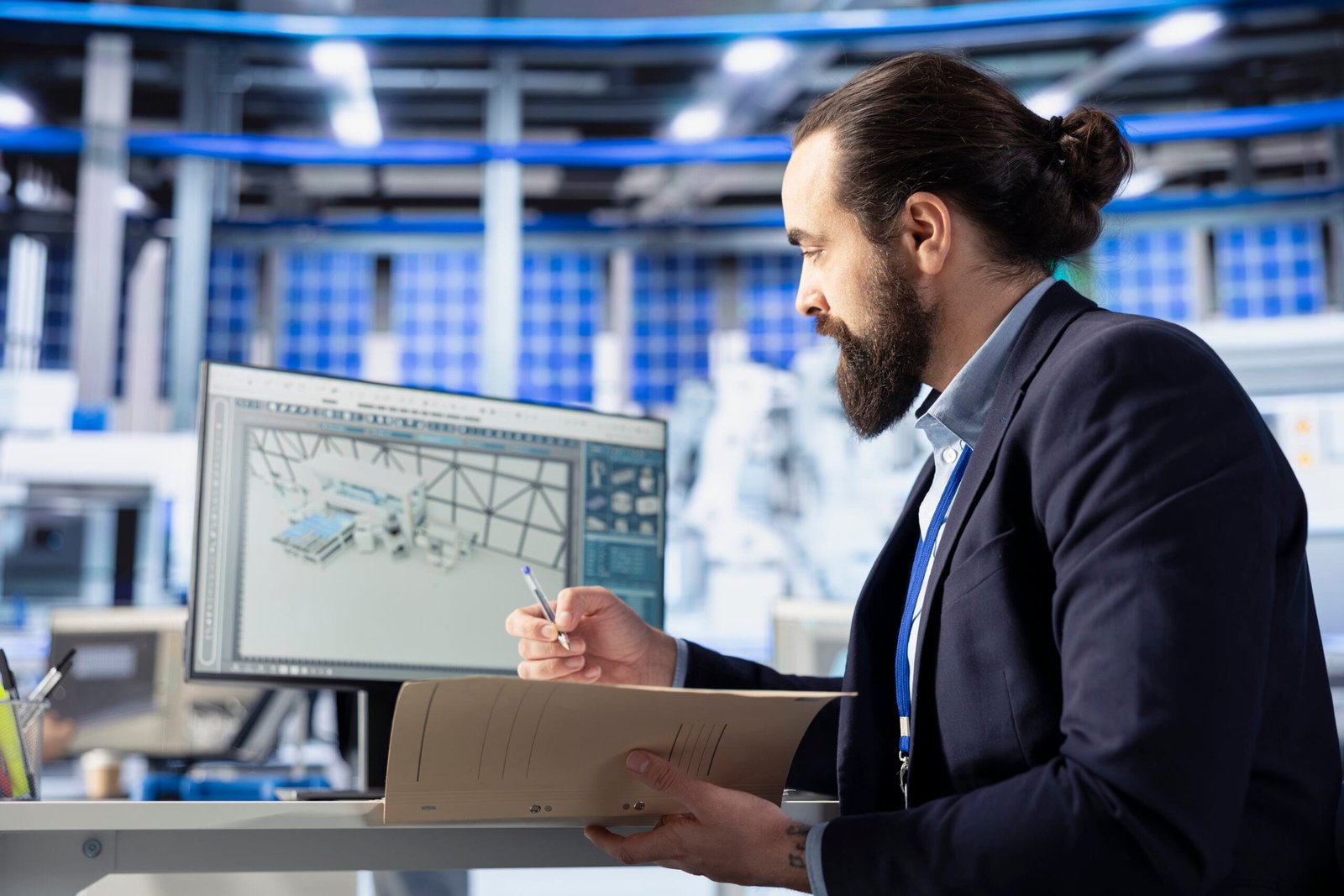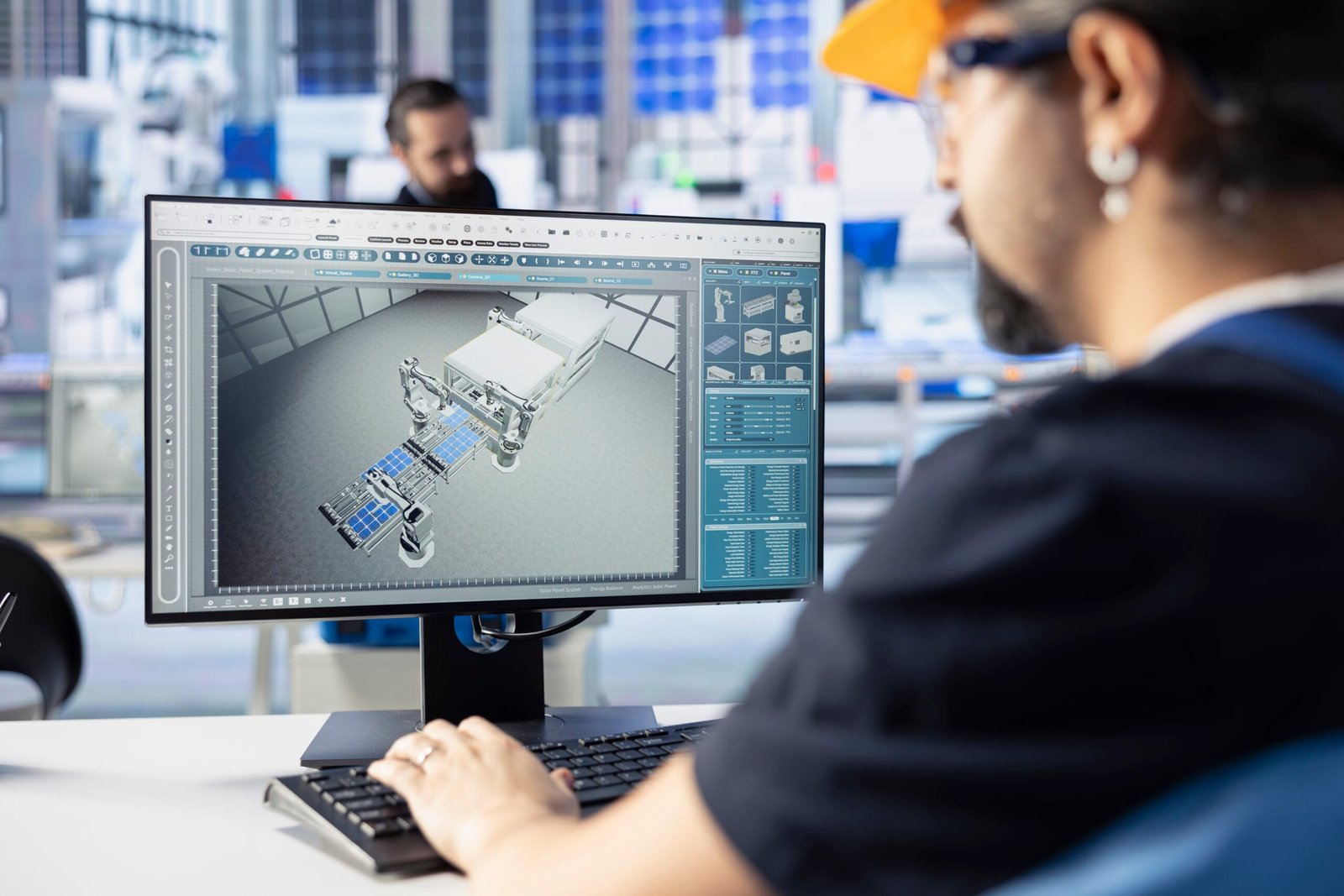Introduction
How Does 3D Rendering Work is the process of converting 3D models into realistic images or animations using computer software. It plays a crucial role in industries such as architecture, engineering, product design, gaming, and visual effects (VFX). For DesignHok, which specializes in 3D modeling, How Does 3D Rendering Work, mechanical design, and 2D drafting, understanding how 3D rendering works is essential for producing high-quality visualizations.
This blog will explore the step-by-step process of 3D rendering, the different types of rendering techniques, the essential software and hardware required, and how DesignHok uses 3D rendering to create stunning visual projects.
What is How Does 3D Rendering Work?
How Does 3D Rendering Work is the final step in the 3D visualization process, where a computer generates a realistic or stylized image from a 3D model. The goal is to produce photorealistic or artistic images that showcase details such as lighting, shadows, textures, and reflections.
This technology is widely used in:
✔ Architectural visualization (building designs, interiors, landscapes)
✔ Product design (prototype visualization, industrial design)
✔ Mechanical engineering (technical illustrations, component modeling)
✔ Gaming and animation (game environments, CGI movies)
How Does 3D Rendering Work?
Step 1: 3D Modeling
The first step in How Does 3D Rendering Work is creating a 3D model using specialized software like Blender, Autodesk 3ds Max, Maya, or SketchUp. A 3D model is a digital representation of an object that consists of polygons, vertices, and edges.
✔ Basic Modeling: Creating simple shapes like cubes, spheres, or cylinders.
✔ Advanced Modeling: Designing detailed objects, characters, or structures.
✔ CAD Modeling: Used for mechanical and industrial design.
Step 2: Applying Textures and Materials
Once the 3D model is complete, it needs textures and materials to look realistic. Textures are images wrapped around the 3D model to give it surface details, while materials define properties like color, reflectivity, and transparency.
✔ Diffuse Textures: Basic color and details.
✔ Bump & Normal Maps: Adds depth to surfaces without increasing polygon count.
✔ Specular & Reflection Maps: Controls how shiny or reflective the surface is.
Step 3: Setting Up Lighting
Lighting plays a crucial role in defining the mood, realism, and depth of a scene. There are different types of lighting techniques:
✔ Point Lights: Small sources of light like lamps or candles.
✔ Directional Lights: Simulates sunlight with parallel rays.
✔ Spotlights: Focused beams of light for specific effects.
✔ Global Illumination (GI): Simulates real-world light behavior for photorealistic results.
Step 4: Camera Positioning
A virtual camera is placed within the 3D scene to determine the perspective, angle, and composition of the final image. The camera settings can control:
✔ Field of View (FOV): Determines how much of the scene is visible.
✔ Depth of Field (DOF): Creates a blur effect for a realistic focus.
✔ Lens Effects: Simulates real-world camera lenses for added realism.

Step 5: Rendering the Scene
Rendering is the process of calculating all the scene data (textures, lighting, reflections) to generate the final image. There are different types of rendering methods:
1. Real-Time Rendering
✔ Used in gaming and interactive applications.
✔ Relies on powerful GPUs (Graphics Processing Units).
✔ Focuses on speed over photorealism.
✔ Example: Used in game engines like Unreal Engine and Unity.
2. Offline Rendering (Ray Tracing & Rasterization)
✔ Used for high-quality still images and animations.
✔ Requires more processing power and time.
✔ Ideal for architectural visualization, movies, and product design.
3. Ray Tracing (Realistic Rendering)
✔ Simulates how light interacts with objects in real life.
✔ Produces realistic reflections, shadows, and transparency.
✔ Used in VFX, animation, and high-end architectural design.
4. Rasterization (Faster Rendering)
✔ Converts 3D models into 2D pixels for display.
✔ Used in games, VR, and interactive applications.
✔ Less accurate than ray tracing but much faster.
Step 6: Post-Processing and Editing
After rendering, final touch-ups are done in software like Photoshop, After Effects, or Premiere Pro. This step may include:
✔ Color correction for improved contrast and brightness.
✔ Adding motion blur or depth of field effects.
✔ Noise reduction for smoother visuals.

Software Used for How Does 3D Rendering Work
DesignHok uses industry-leading software for How Does 3D Rendering Work and visualization, including:
✔ Blender – Open-source rendering and animation.
✔ Autodesk 3ds Max – Industry standard for architecture and product design.
✔ V-Ray – Advanced photorealistic rendering engine.
✔ Lumion – Real-time architectural rendering.
✔ KeyShot – Best for product visualization.
Hardware Requirements for How Does 3D Rendering Work
For high-quality How Does 3D Rendering Work, powerful hardware is essential.
✔ Processor (CPU): Multi-core CPUs like AMD Ryzen 9 or Intel i9 for fast calculations.
✔ Graphics Card (GPU): NVIDIA RTX 4090 or AMD Radeon Pro for real-time rendering.
✔ RAM: 32GB – 128GB for handling large scenes.
✔ Storage: SSDs for fast file access and loading.
How Does 3D Rendering Work
At DesignHok, 3D rendering is used for:
✔ Architectural Visualization: Creating lifelike images of buildings and interiors.
✔ Mechanical Design: Visualizing industrial and mechanical components.
✔ Product Rendering: Designing consumer products with realistic materials.
✔ 3D Animation: Developing animated sequences for presentations.
Conclusion
How Does 3D Rendering Work is an essential process that transforms 3D models into realistic images and animations. It involves multiple steps, including modeling, texturing, lighting, rendering, and post-processing.
For DesignHok, high-quality 3D rendering ensures accurate visualization of designs, better client presentations, and enhanced project development. By using advanced rendering techniques and powerful hardware, DesignHok continues to deliver top-tier 3D modeling and visualization services.
Frequently Asked Questions (FAQ)
1. What is the purpose of 3D rendering?
How Does 3D Rendering Work is used to create realistic images of 3D models, helping in architectural visualization, product design, mechanical engineering, and animation.
2. How long does 3D rendering take?
How Does 3D Rendering Work time depends on scene complexity, resolution, and hardware. Simple renders may take minutes, while high-resolution animations can take hours or even days.
3. What’s the difference between real-time rendering and offline rendering?
✔ Real-time rendering is used in games and VR for instant feedback.
✔ Offline rendering produces high-quality images but takes longer to process.
4. What software is best for 3D rendering?
Popular software includes Blender, Autodesk 3ds Max, V-Ray, Lumion, and KeyShot.
5. How much RAM is needed for 3D rendering?
✔ 16GB – Basic projects
✔ 32GB – Mid-range rendering
✔ 64GB+ – High-end rendering and animations





